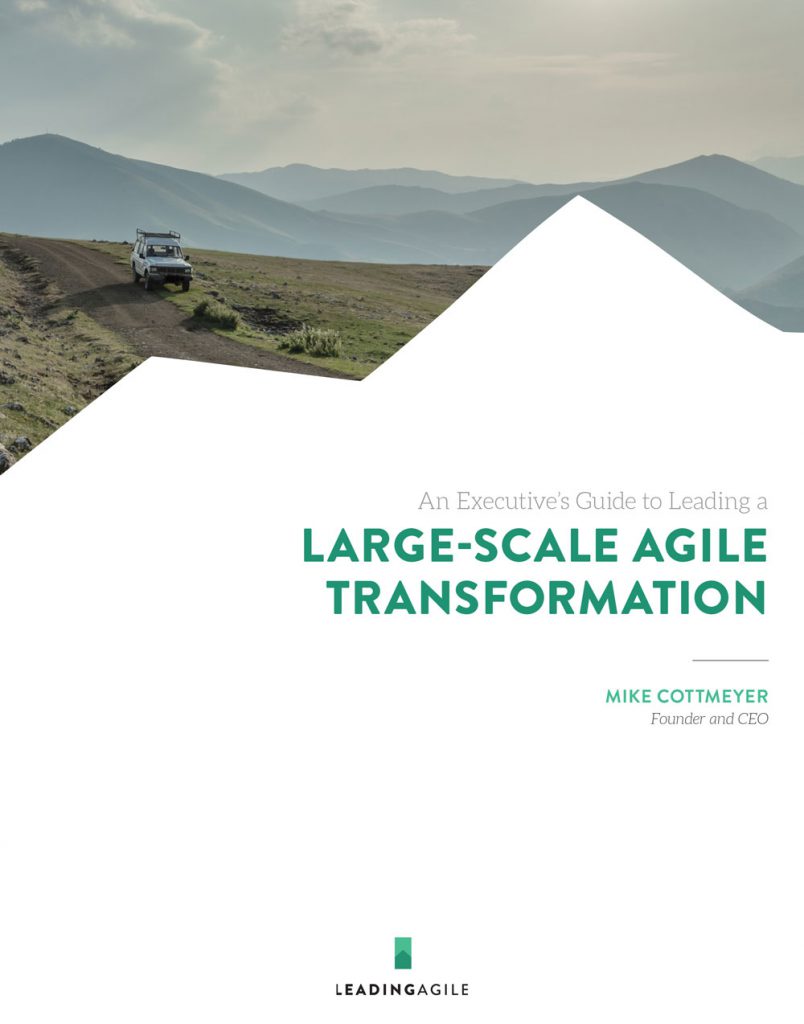10 Steps to Agile Transformation

For businesses to succeed in today’s market, they must be able to rapidly and reliably deliver product increments to customers. More importantly, they need to be nimble and able to respond to feedback from these customers. This means a move away from the predominant way of organizing, managing, and funding work. For small companies, Agile Transformation can be straightforward—since getting alignment can be accomplished by getting everyone in a room and creating a shared understanding. However, for large, complex organizations with legacy technology architecture, Transformation must be carefully orchestrated to ensure that the work and investment made in making the change create business value and actually leads to Agility.
Agile Transformation is the work of refactoring the organization so that it can actually do Agile.
Agile Transformation Meaning
Agile Transformation is fundamentally about forming teams, building backlogs, and regularly producing increments of working, tested software. At scale, it’s creating networks of loosely coupled teams, coordinating dependencies, managing trade-offs, getting things into the market fast, and measuring throughput instead of productivity.
The things that get in the way of accomplishing these things is the work of the Transformation.
Agile Transformation Strategy
The strategy for an Agile Transformation comes from knowing where your organization is today and where you need to go. There are two dimensions which need to be considered when answering this question.
First, you should consider what your company values in terms of planning. How much do you value predictable delivery vs the ability to adapt to change? While most organizations value both, there is a trade-off.
The more you design the system for predictability, the harder it is to change. And, the more you design for adaptability, the less predictable it will be.
The second thing to consider is what your customer’s value from a planning perspective. Are you trying to figure out what your customer wants, what we call an emergent ecosystem or are you focused on making and meeting commitments, what we call a convergent ecosystem?
Our Compass
When plotted along the axis of a 2×2 matrix, we get four quadrants which can be used to evaluate where your organization is today and to decide where you need to go to get the business benefits you’re after.

The path to adaptive-emergence, often runs through the predictive-convergent quadrant, through the adaptive-convergent quadrant, and finally to the adaptive-emergent quadrant. The process centers around forming teams, defining an Agile governance model, and identifying and baselining metrics the company cares about. Also, using those metrics over time to measure and track improvement.
For a full overview of the 4 Quadrants visit The Compass
Your Agile Transformation Strategy will ultimately depend upon the value system of your organization and the value system of the customers your organization serves.
Transformation can be planned, managed, and measured.
The 10 Steps to an Agile Transformation
The key is to understand the right way to plan, so that business value is delivered at regular increments in the Transformation. The goal is to transform the way you work. You should already be moving away from “big-bang” product releases to regular, incremental delivery so the work of the Transformation ought to be managed the same way.
While every Agile Transformation is different we typically see an organization go through the following steps:
Step 1: Build A Leadership Coalition
Agile Transformation is going to require changes to every part of the business, and will require support from the top. Make sure executives are on board and know what is going to happen.
Step 2: Define an End State Vision
We have to have some idea of where we’re going before we start, but pragmatically, we expect the plan to change. This plan includes a working hypothesis for structure, governance, and metrics which we will progressively elaborate throughout the Transformation. There are well understood patterns around how to form teams at scale and how to orchestrate those teams to do work.
Step 3: Build a Transformation Roadmap
What team, capability, or group goes first? Second? Third? We have to give the organization some idea of what we’re going to do, how long it’s going to take, and what benefits we expect to acheive from the investment. We call the groups that Transform together Expeditions, and the intermediate outcomes they achieve are called Basecamps.
Read more about the journey expeditions take through basecamps
Step 4: Maintain a Rolling 90-Day Plan
The Transformation Leadership Team meets to plan forward, assess progress, and adjust as necessary. The goal is to have a rolling 90-day plan with a fairly specific view of what’s going to take place. The 90-day plan should is similar to an Agile release plan or PI. The plan will enumerate all the things in the organization that will be impacted over the next 90-day period.
Step 5: Conduct 30-Day Checkpoints
Similar to the sprint cycle, we want to periodically assess the progress of the work of the Transformation, retrospect, and adjust.
Step 6: Adapt & Learn
Re-assess the end-state vision based upon how our understanding has evolved during the course of the Transformation.
Step 7: Connect Activity to Outcomes
The whole reason we’re doing this is to create better business outcomes. We begin justifying the investment by creating hypotheses, conducting experiments, demonstrating outcomes, and pivoting based on what we learn. While all of the activities won’t be known in advance, the goal is to get good at sequencing the outcomes that must be achieved, and to ensure that the activities completed tie back into the desired business outcomes.
Step 8: Connect Outcomes to Business Objectives
We want to be able to trace improvements in the system to tangible business benefits, and regularly show progress against business metric baselines to the Executives. The ultimate goal is to explicitly link together the dollars invested and the measurable outcomes achieved.
Step 9: Manage Communication
Regular, transparent communication about progress and impediments from the leadership will create excitement and energy. This often takes the form of Town Halls, Executive roundtables, signage, and various other information radiators.
Step 10: Create Safety for Everyone Involved
Help everyone see what’s in it for them and where they fit in the new organization. Create clarity, accountability, and measurable progress for everyone.
Agile Transformation Roadmap
For a large, complex organization to successfully Transform, a Transformation roadmap is essential. A figure-it-out-as-you-go approach simply won’t work. We have found that successful Transformations follow this roadmap pattern.

Getting Started: Define the End State
This is a wide look at the organization and where the business goals are set for the Transformation. This end-state vision will also define a pattern for forming teams, identify process flows, establish governance, and create a metrics and tooling strategy to baseline performance and measure improvement over time.
At the end of this phase, the organization will have identified the first Expedition to run an end-to-end pilot, and have identified the basecamps necessary to implement the changes.
Transformation Begins: Pilot & Roll Out
This step involves forming, training, and coaching teams—effectively moving Expeditions, progressively, through basecamps, over time. All the aspects of the end-state vision are implemented, baseline metrics are gathered, and improvement is regularly measured and communicated as the teams mature.
Sustaining the Changes
At this point, structure, governance, and metrics will begin to solidify, and the organization will begin to establish an internal set of best practices. During this time, the documentation of those practices, in a central location, will prove to be invaluable to your organization as it moves forward. This may mean that you will need to create training materials, handouts, process cheatsheets, and develop methods and strategies for on boarding internal coaches, conducting ongoing organizational assessments, and remediation.




